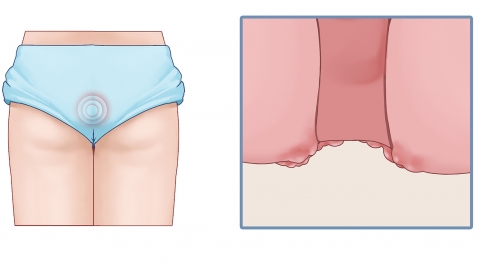How to彻底 cure a pimple on the buttocks?
Generally, the occurrence of boils on the buttocks may be caused by factors such as inadequate local hygiene, prolonged sitting pressure, bacterial folliculitis on the buttocks, infected sebaceous cysts on the buttocks, or type 2 diabetes. It is recommended to seek timely medical attention, identify the underlying cause, and receive appropriate treatment under a doctor's guidance, including general care, medication, or surgical treatment. A detailed explanation is as follows:

1. Inadequate Local Hygiene: Accumulation of sweat and dirt on the buttocks can block hair follicles and promote bacterial growth, leading to boils. Incomplete or inconsistent cleaning can easily result in recurrence. Wash the buttocks daily with warm water, dry thoroughly with a clean towel afterward, choose loose and breathable cotton underwear, change it daily, and periodically disinfect underwear by scalding with boiling water to reduce bacterial proliferation at the source.
2. Prolonged Sitting Pressure: Extended sitting can impede blood circulation in the buttocks. Pressure on hair follicles weakens their resistance, making them more susceptible to bacterial invasion and the development of boils. This is common among office workers and students. It is recommended to get up and move around for 5–10 minutes every 30–40 minutes of sitting, perform simple buttock stretches, and use breathable, soft cushions. Avoid sitting on hard benches for long periods to improve blood circulation and reduce the risk of follicular damage due to pressure.
3. Bacterial Folliculitis on the Buttocks: Bacterial infections such as Staphylococcus aureus can infect hair follicles, with repeated inflammatory stimulation leading to boils, presenting as red papules accompanied by pus points. Patients should follow medical advice to apply topical medications such as mupirocin ointment, fusidic acid cream, or compound polymyxin B ointment to the affected area.
4. Infected Sebaceous Cyst on the Buttocks: Blockage of sebaceous gland ducts leads to cyst formation, which can secondarily develop bacterial infections and result in boils, characterized by localized redness, swelling, and a fluctuant sensation. After controlling the infection, surgical excision of the sebaceous cyst is required, ensuring complete removal of both the cyst and its wall to prevent residual cyst wall from causing reinfection. Postoperative care should focus on keeping the wound clean and dry.
5. Type 2 Diabetes: Poor long-term glycemic control reduces skin resistance, allowing bacteria to proliferate easily and cause recurrent boils, which heal slowly. Patients should follow medical advice to use medications such as metformin extended-release tablets, glimepiride tablets, or insulin injections to maintain stable blood glucose levels and regularly monitor their blood sugar.
In daily life, maintain a light diet, reduce intake of spicy and fried foods, and consume more fresh vegetables and fruits rich in vitamins. Avoid squeezing boils manually to prevent the spread of infection.




